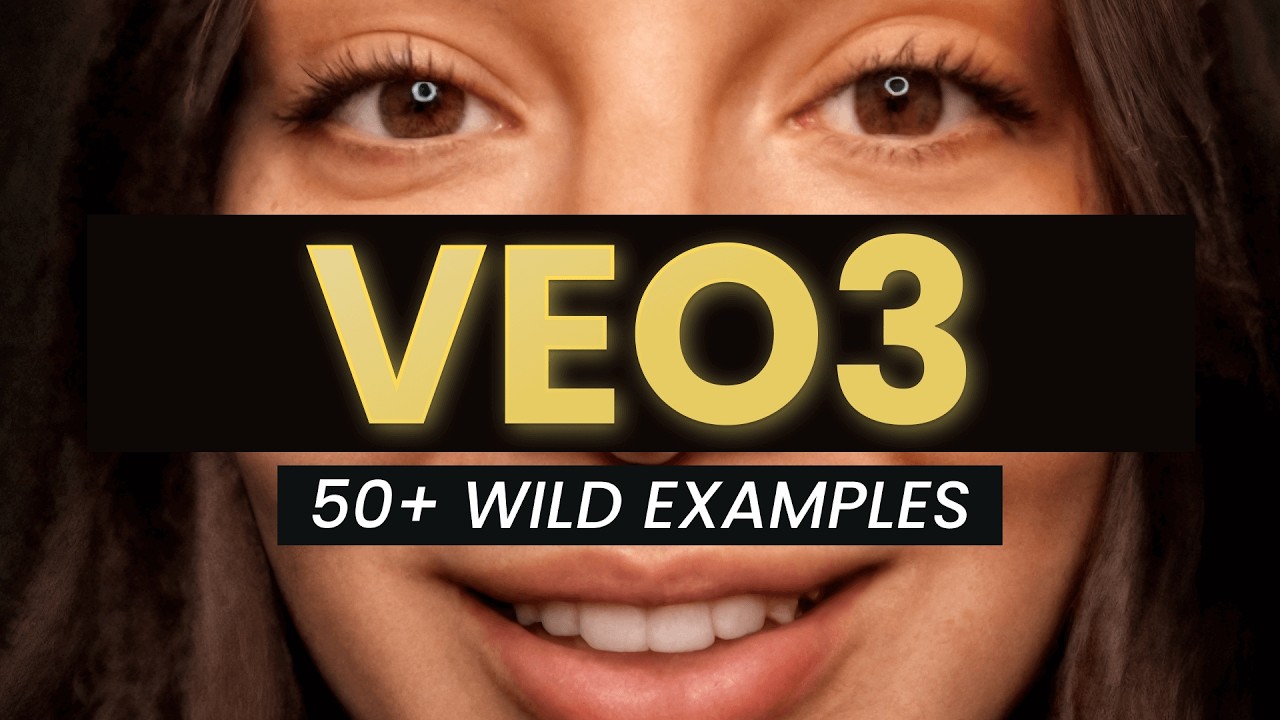The video showcases Google’s new V3 video model, highlighting its groundbreaking ability to generate videos, dialogue, music, and sound effects from a single prompt, opening up vast creative possibilities for content creators. Despite some limitations with complex scenes and movements, V3’s versatility and high-quality outputs are revolutionizing AI-driven content creation across various styles and applications.
The video introduces Google’s new V3 video model, highlighting its revolutionary capabilities in AI content generation. Unlike previous models, V3 can produce not only videos but also dialogue, music, and sound effects from a single prompt. The creator emphasizes how this advancement opens up vast creative possibilities, from making faceless YouTube channels, such as ASMR content, to creating complex cinematic scenes and animations, all with minimal effort. The potential for global reach is also noted, as V3 can generate content in multiple languages, broadening its applicability for international audiences.
Throughout the video, numerous impressive examples showcase V3’s capabilities. These include AI-generated ASMR sounds with remarkable audio quality, surreal action sequences with realistic vehicle movements, and cinematic sound design synchronized perfectly with visuals. The model’s ability to create diverse content—from street interviews and comedy routines to animated cartoons and historical scenes—demonstrates its versatility. The creator points out how V3 can produce cohesive aesthetic styles, maintain continuity, and generate detailed backgrounds, making it a powerful tool for filmmakers, marketers, and content creators.
The video also explores the model’s proficiency in generating dialogue with emotional depth and accurate lip-syncing, even in multi-character scenes. Examples include AI actors with expressive facial gestures and accents, as well as animated characters speaking and lip-syncing convincingly. However, some limitations are acknowledged, such as struggles with medium shots, multiple characters, and complex movements like running or fighting, which can result in morphing or unnatural animations. Despite these challenges, the overall quality and potential for creating entire animated or cinematic sequences with a single prompt are emphasized as groundbreaking.
Further, the creator discusses the broad range of use cases enabled by V3, from realistic marketing videos and product advertisements to surreal and humorous scenes. Examples include AI-generated scenes of conferences, futuristic cityscapes, and historical explanations, all demonstrating V3’s ability to handle diverse styles and scenarios. The model’s capacity to produce synchronized soundtracks, voiceovers, and special effects enhances its appeal for professional content production. The video also compares V3’s performance with other AI models, noting its superior user testing results, though it remains expensive at current subscription prices.
In conclusion, the video expresses excitement about V3’s transformative impact on AI-driven content creation. It highlights how the model broadens creative horizons, making high-quality videos, animations, and soundscapes accessible to individual creators and small studios. While acknowledging some current limitations, the creator is optimistic about future improvements and more affordable alternatives. The video ends with a promotion of related courses and free resources, encouraging viewers to explore AI’s potential further and inspiring them to experiment with this powerful new tool for their own creative projects.
